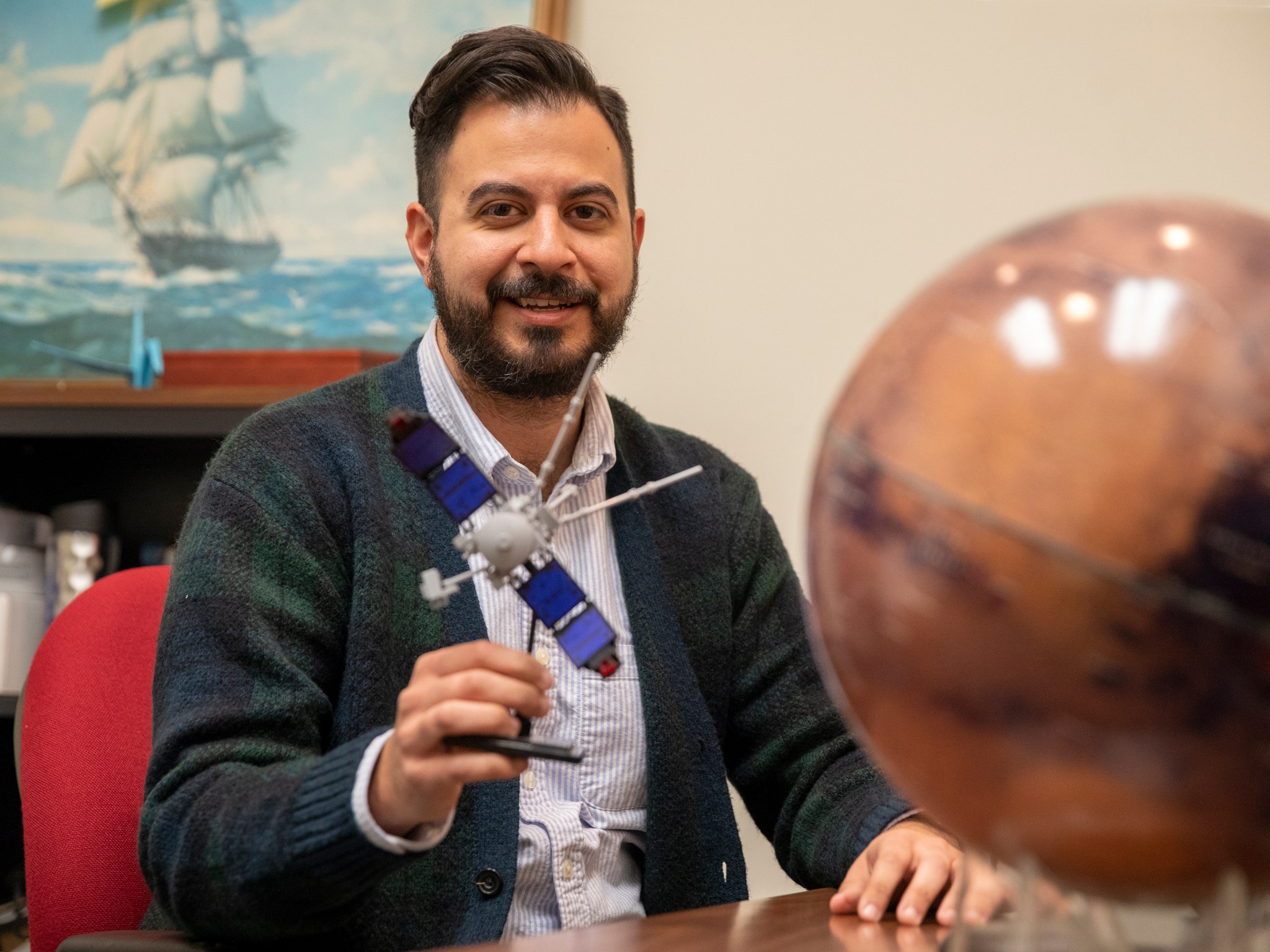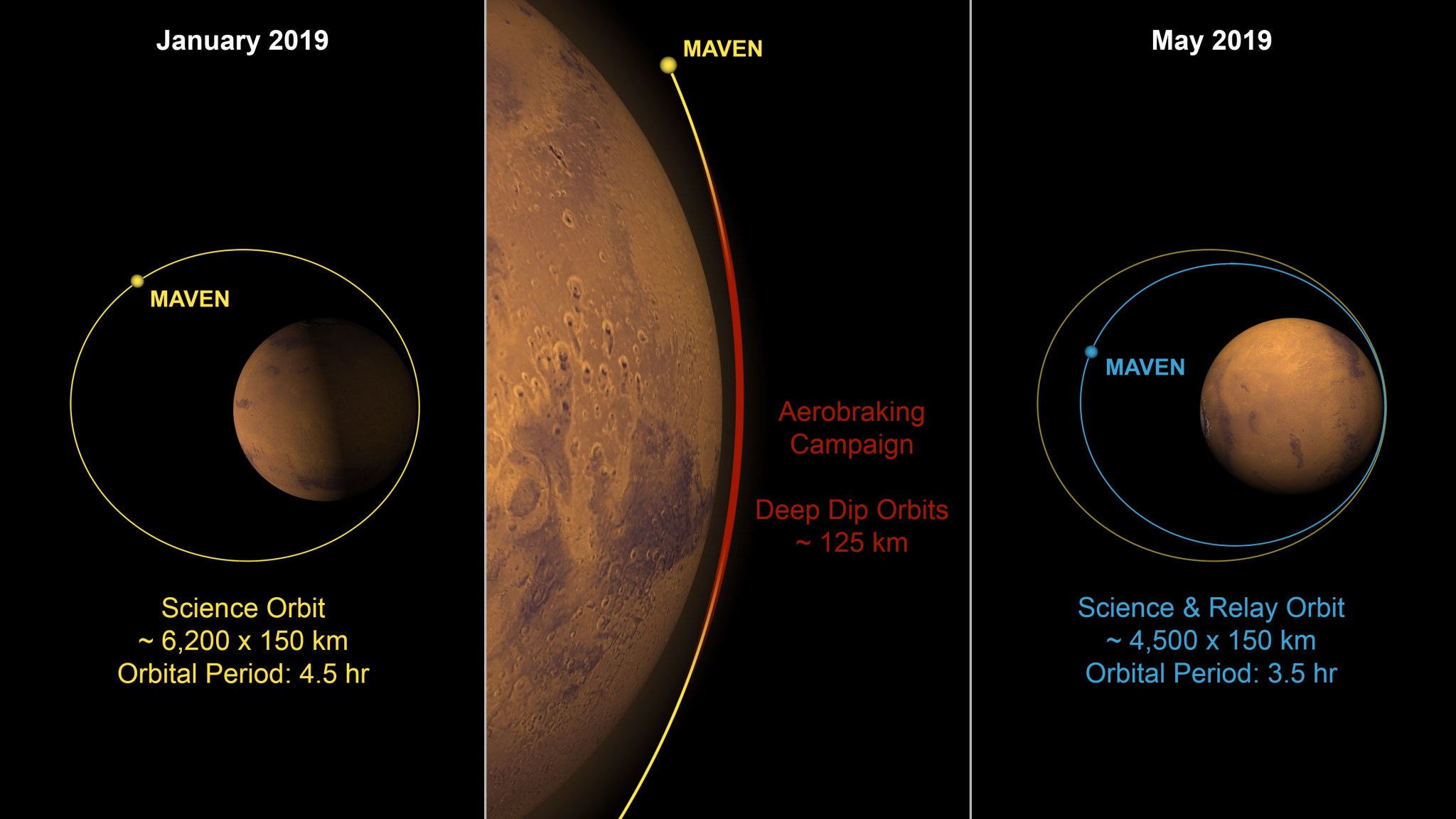Sitting on a bookcase next to a Martian spinning globe are two LEGO construction sets: one of the Curiosity rover and the second of the MAVEN orbiter.
“It’s my goal to have LEGO sets for every mission I work on,” said Rafael Lugo, a flight mechanics engineer at NASA’s Langley Research Center in Hampton, Virginia. Since 2015, Lugo has analyzed the science and deep dip operations from the Mars Atmosphere and Volatile EvolutioN orbiter, or simply MAVEN.
Lugo’s PhD dissertation involved the trajectory and atmosphere reconstruction for the Mars Science Laboratory, iconically known as the Curiosity rover. Through his mentor Robert Tolson, a Langley retiree and Professor Emeritus at the National Institute of Aerospace, Lugo was introduced to the MAVEN orbiter project.
“It is an honor to work with Dr. Tolson and have access to that kind of expertise and experience,” said Lugo.
Although an orbiter has a different approach to missions than a lander, the basic principles when in the atmosphere are the same. The MAVEN orbiter presented a good challenge for Lugo’s interests, while still providing a natural transition from Curiosity rover.
MAVEN supports science missions through a couple of different maneuvers — atmospheric skimming and something called a “deep dip.” During skimming, the Martian orbiter grazes the top of the atmosphere to measure the atmospheric properties using different scientific instruments. When MAVEN does this, drag from passing through the upper atmosphere slows the orbiter down just a bit, and the spacecraft sends back data about the Red Planet’s atmosphere to Earth.
During a deep dip, the orbiter approaches closer to the planet by diving deeper into the atmosphere. The drag on MAVEN increases, which slows the vehicle a bit more and increases the signal to the onboard accelerometers. These accelerometers provide data on how the vehicle changes speed as it moves through the atmosphere.
“What I do is process that data to create a density profile of the Martian atmosphere,” said Lugo. Lugo and the MAVEN science team can then learn more about the Martian atmosphere and its planetary history, including the climate, water and habitability. MAVEN’s atmospheric data plays an integral part in understanding the environment on Mars, providing bedrock research as we aim for Mars.
On Feb. 11, 2019, MAVEN began an aerobraking campaign, which is like an extended deep dip. The goal is to reduce the highest altitude in the orbit so that MAVEN can better serve as a communications relay for the rovers on the surface.
“By having an extended aerobraking campaign instead of using fuel, we save on propellant, which basically extended the lifetime of the mission,” said Lugo.
During aerobraking, MAVEN is changing from its original science orbit of 3,850 miles to an altitude of 2,800 miles.
“NASA wants to keep continuous coverage as we prepare for future Martian missions,” said Lugo. “Being able to communicate effectively with the robots is very important.”
During a normal deep dip, the vehicle slows down to take density measurements using the accelerometer, then using a series of propulsive maneuvers, the vehicle is pushed back into the scientific orbit.
Using aerobraking, MAVEN’s new orbit path strives to keep the orbiter in a density corridor, like a sweet spot. This orbit path will gently guide MAVEN closer to the planet. It is expected that MAVEN will be able relay information from Mars to Earth as it manages its fuel to last through 2030.
“It’s been a joy working on an actual spacecraft that is actually orbiting another planet,” said Lugo. “MAVEN will always have a special place in my heart.”
MAVEN’s principal investigator is based at the University of Colorado’s Laboratory for Atmospheric and Space Physics, Boulder. NASA’s Goddard Space Flight Center in Greenbelt, Maryland, manages the MAVEN project. Lockheed Martin built the spacecraft and is responsible for mission operations. NASA’s Jet Propulsion Laboratory in Pasadena, California, provides navigation and Deep Space Network support, as well as the Electra telecommunications relay hardware and operations.
























